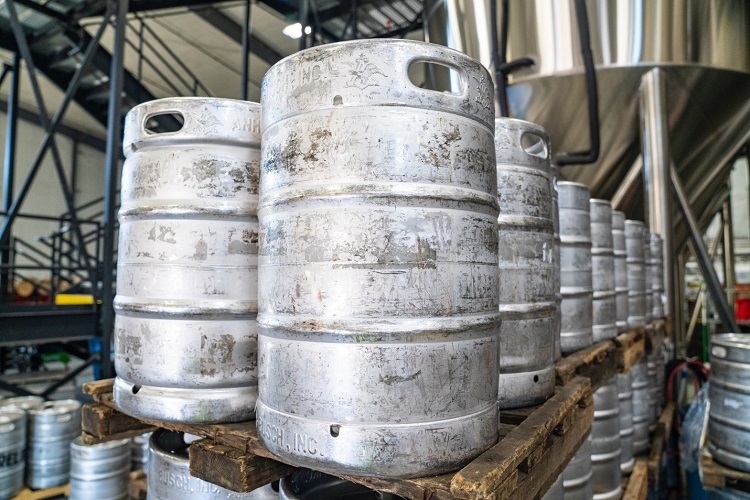If you’re thinking about starting a brewery, you may want to consider investing in a brewery fermenter.
While there are many options on the market, one of the best places to start your search is a local brewing vessel manufacturer. A reputable company like ABS Commercial can help guide you to the right setup for your business. These companies offer complete services including knowledgeable sales experts, a full line of products, and installation crews.
A brewery fermenter is a large vessel that transforms the wort into alcohol. Most are made of glass, stainless steel, or plastic. Wort is made from water and grains and is added to the fermenter after it has been cooled. This prevents the wort from experiencing heat shock during the fermentation process.
Once fermentation is complete, the beer is pumped from the fermenter and filtered to remove any solids. This is the final step before bottling or kegging. It is then conditioned by adding extra carbon dioxide to the beer. This step is important for beer flavor. In addition, the beer fermenter is a good place to monitor the carbon dioxide level.
Depending on the style of beer you want to make, the fermenter you choose is very important. Many commercial craft brewers use cylindrical fermenters. Cylindrical fermenters are characterized by a conical bottom and a cylindrical top.
They are three to four times taller than they are wide and are usually made of stainless steel. Most of these vessels also come with adjustable foot supports. These vessels are the standard choice in American craft brewing.
While plastic buckets are inexpensive and easy to use, they do have a number of limitations when it comes to more advanced fermenting practices. Plastic buckets are also prone to scratching and therefore are not the best choice for complex fermenting practices.

Stainless bucket fermenters
One of the most popular hybrid styles for your brewery is the stainless bucket fermenter. These devices have many benefits over plastic buckets, including being easy to clean and durable.
They also feature a tightly-fitted lid to keep light and oxygen out of your beer. Another benefit of stainless bucket fermenters is their coned bottom, which helps separate sediment and trub from your beer.
This stainless bucket fermenter can hold nearly 7 gallons of beer and is equipped with a racking arm for easy access to the beer. It is also weldless so you can easily remove the assembly for cleaning.
You can even boil the fermenter to sterilize it. Click the link: https://www.sciencedirect.com/topics/chemistry/sterilization-and-disinfection for more information about sterilization.
Stainless bucket fermenters for brewery are made from 304 stainless steel and are a great choice for homebrewers. They are a step up from plastic or glass buckets and offer a conical bottom to prevent off-flavors from developing. A stainless bucket fermenter is also a more affordable choice.
Stainless bucket fermenters can be used in conjunction with a kegerator. These are a great way to get your first batch of beer fermented without spending a fortune.
Airlocks
Airlocks are important for fermentation. Click here for more information about the brewing process. They keep oxygen and other organisms from entering your fermenter.
Most organisms, including humans, use oxygen to live. Fish filter oxygen through gills and plants take it in through leaves and roots. This is the same principle in beer making. An airlock is an easy way to prevent the unwanted elements from entering your fermenter.
There are several different types of airlocks on the market. There are bubble airlocks, 3-piece airlocks, and S-shaped airlocks. The bubble airlock is the cheapest type of airlock and is not very durable or reusable. A 3-piece airlock has three pieces: a small tube in the middle, a floating bubbler, and a cap. The secondary chamber contains water to keep the airlock closed.
While brewing your beer, watch for bubbles in the airlock. If there are none, your beer may not be fermenting properly. This can occur when a krausen layer forms on top of the wort. In such cases, you should clean and sanitize the airlock.
There are also temporary airlocks that you can use to protect your fermenter from air. Plastic wrap or a food storage bag can be used for this purpose. Just make sure that you use sterile plastic wrap so you don’t risk cross-contamination. Alternatively, you can use a blow off system that uses a tube dipped in water, sanitizer, or a bucket.
Airlocks prevent the airspace inside a fermentation container from being contaminated by a variety of bacteria, yeast, and other organisms. These airlocks help keep the fermentation airspace anaerobic by eliminating oxygen. They also prevent oxidation, which prevents mold and other microorganisms from flourishing.
Dry hop port
Dry hopping is the process of adding hops to beer to increase the aroma and flavor. The best time to dry hop is after the majority of fermentation has completed.
After fermentation, the beer becomes anaerobic, or oxygen-free, and the alcohol content inhibits spoilage organisms. Also, the beer’s pH levels drop, making it an ideal time for dry hopping.
Dry hopping can be performed in several ways. One method is by using a hop doser. The device attaches to the dry hop port, which is usually at the top of a fermenter. It uses a butterfly valve and tri clamp fittings to allow users to drop in hops without exposing beer to oxygen. Another method uses a sanitized stainless steel mesh tube to prevent the hops from clogging the airlock or blow-off tube.
While dry hopping requires less hops, the amount used will depend on the size of your fermenter. Larger tanks generally require more hops. But if your brewing process is smaller, you can reduce the amount of hops by adding more water to the fermenter. This method is also beneficial for small batch brewers, as it may reduce head retention.
Pressure relief valves
A pressure relief valve for a brewery fermenter is a necessary safety device. Although pressure relief valves are designed for use in sealed tanks, they aren’t always adequate for all circumstances.
The flow rate is usually low, and they can clog easily. In these cases, a secondary pressure relief device is more suitable. For example, you can use a corny keg lid to help reduce pressure in your device.
One of the most important aspects of a pressure relief valve for a brewery device is its design. Most of these valves are made of brass, and are joined together by thread tape. The brass will break down after a while, which can cause a leak.
The process of disassembling a brass valve can also damage the soft brass. Moreover, you can’t count on accurate readings from these valves because the springs aren’t standardized, and their tolerances are not precise enough.
One type of pressure relief valve is called a spunding valve. It sits on the gas post of a pressure-capable tank. This type of valve is ideal for devices made from Cornelius kegs, as it is designed to prevent clogging. It is also non-adjustable, and is preset at 15 PSI to ensure maximum safety.
Pressure relief valves for brewery devices are necessary to protect the fermenting vessel from excessive pressure. The pressure relief valve will prevent an explosion in case of excessive pressure. They are available in many styles. Some are spring-loaded, while others use a weight-loaded valve.
 HammBurg Be informed with latest news, reviews, entertainment, lifestyle tips, and much more.
HammBurg Be informed with latest news, reviews, entertainment, lifestyle tips, and much more.




